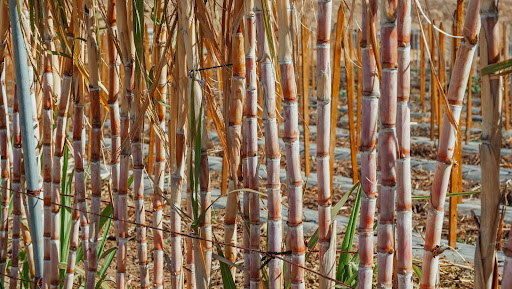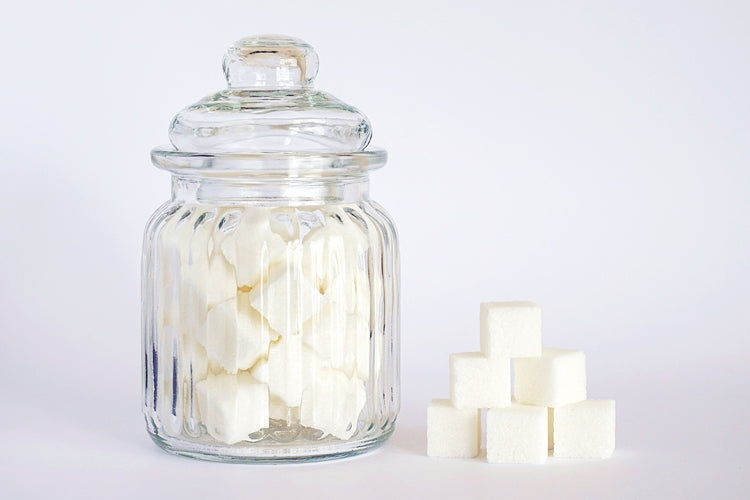Beet Sugar vs Cane: A Guide to Choosing the Best Option for Your Recipes
Beet Sugar vs Cane: A Guide to Choosing the Best Option for Your Recipes
Blog Article
Discovering Beetroot Sugar Vs Cane: Nutritional Conveniences and Culinary Utilizes
The comparison in between beetroot sugar and walking stick sugar extends past mere preference and structure, revealing elaborate nutritional profiles and cooking applications that merit mindful examination. As we discover the nuances of these 2 sugars, it becomes clear that the ramifications of their use are much more profound than one may initially presume.
Overview of Beet Sugar
Although both beet sugar and walking cane sugar serve similar features in culinary applications, beet sugar is obtained particularly from the sugar beet plant (Beta vulgaris), an origin veggie cultivated in pleasant environments. This process starts with the harvesting of sugar beetroots, which are after that cleaned, cut, and based on extraction strategies to yield sugar-rich juice (beet sugar vs cane). The juice undertakes purification and crystallization, resulting in the granulated sugar commonly utilized in sectors and households
Nutritionally, beet sugar is chemically identical to walking cane sugar, both primarily including sucrose. Beet sugar manufacturing tends to have a reduced ecological impact, as sugar beetroots call for much less water and can be expanded in diverse agricultural conditions. Additionally, the cultivation of sugar beetroots can contribute to crop rotation practices, enhancing soil health.
Beetroot sugar typically has trace quantities of nutrients, including calcium and potassium, although these are minimal in regular consumption. In cooking and baking, beetroot sugar executes equivalently to its cane counterpart, making it a functional sweetener. Its neutral flavor profile allows it to be effortlessly incorporated right into different recipes without altering the designated preference of the end product.
Review of Walking Cane Sugar
Cane sugar, originated from the sugarcane plant (Saccharum officinarum), represents approximately 70% of global sugar manufacturing. This flexible sweetener is cultivated in subtropical and tropical areas, with major producers including Brazil, India, and China. The extraction procedure includes crushing the sugarcane stalks to release the juice, which is after that clarified, vaporized, and crystallized to generate raw walking cane sugar.
Walking stick sugar is characterized by its fine, white granules and is commonly located in both granulated and powdered kinds. Its taste profile is typically referred to as pleasant and tidy, making it ideal for a large range of culinary applications, from baking and cooking to sweetening drinks.
Along with its culinary usages, walking stick sugar additionally acts as a preservative in jams and jellies, as well as a fermentation representative in the production of alcoholic beverages. The sugar is frequently refined into numerous products, consisting of molasses, brown sugar, and fluid sugar, each offering special qualities that can enhance various recipes. In general, walking cane sugar remains an essential component in cooking areas worldwide, highlighting its value in both culinary customs and modern gastronomy.
Nutritional Comparison
When contrasting beet sugar and walking cane sugar, it is vital to analyze their dietary profiles to understand their influences on health. Both kinds of sugar are mainly made up of sucrose, which is a disaccharide composed of sugar and fructose. This implies that, in regards to calorie material, they are virtually similar, providing about 16 calories per teaspoon.
However, there are subtle distinctions in their processing and mineral web content. Beet sugar is usually refined utilizing bone char, which may not appropriate for vegetarians and vegans, while walking stick sugar can be much more straight fine-tuned. In regards to trace element, walking cane sugar may keep slightly a lot more potassium, magnesium, and calcium due to less substantial processing, though these quantities are minimal compared to daily suggested intakes.
Furthermore, both sugars add to the very same health and wellness risks when consumed in extreme amounts, such as weight problems, type 2 diabetic issues, and oral problems. Eventually, the selection between beet and cane sugar might pivot more on personal preference or dietary limitations instead of significant distinctions in nutritional value. Recognizing these subtleties can help customers in making notified dietary options.

Culinary Use Beet Sugar
Beet sugar, a versatile sweetener stemmed from sugar beets, discovers numerous applications in culinary techniques - beet sugar vs cane. Its refined crystals liquify conveniently, making it an excellent ingredient for cooking, cooking, and drink prep work. In the world of cooking, beet sugar adds to moisture retention and browning, boosting the texture and flavor of cakes, cookies, and breads
In addition, its neutral taste profile allows it to blend seamlessly right into different recipes without overpowering various other active ingredients, making it suitable for both sweet and mouthwatering recipes. Beet sugar can also be used in sauces, marinades, and dressings, where it stabilizes level of acidity and enriches the overall taste.
In beverages, beet sugar is generally used to sweeten tea, coffee, and alcoholic drinks, supplying a regular sweet taste that matches diverse flavor profiles (beet sugar vs cane). In addition, it works as a page chemical in jams and jellies, advice making sure a steady product with enhanced life span
Culinary Utilizes of Walking Cane Sugar
Sweet taste is an essential aspect of numerous culinary developments, and cane sugar plays a vital duty in attaining that equilibrium. Its distinct chemical composition allows it to dissolve easily, making it optimal for a variety of applications, from cooking to drinks. Walking stick sugar improves tastes in treats, giving the sweet taste crucial for pastries, cakes, and cookies. It not just adds to taste but also affects appearance; for instance, it aids in wetness retention, resulting in softer baked goods.
In mouthwatering meals, walking cane sugar can balance level of acidity and anger, improving the total flavor account. It is frequently utilized in sauces and marinates, where it aids to create a harmonious mix of pleasant, salty, and umami notes. Furthermore, walking cane sugar is an essential component in maintaining fruits, as it serves as an all-natural chemical, inhibiting microbial growth.
In drinks, walking cane sugar is frequently liked for sweetening mixed drinks, soft drinks, and teas, enabling a clean, pure sweetness. Its convenience makes it a staple in both home cooking areas and expert cooking setups, showcasing its importance in accomplishing cooking excellence.
Final Thought

The contrast in between beetroot sugar and walking cane sugar extends beyond plain preference and texture, revealing elaborate dietary profiles and culinary applications that warrant mindful evaluation.Although both beetroot sugar and cane sugar offer comparable features in cooking applications, beetroot sugar see is obtained particularly from the sugar beet plant (Beta vulgaris), a root vegetable cultivated in warm climates. Beet sugar manufacturing often tends to have a lower environmental impact, as sugar beetroots call for much less water and can be grown in varied farming problems. The sugar is often processed into different products, consisting of molasses, brown sugar, and liquid sugar, each offering distinct features that can improve different recipes.Beetroot sugar, a functional sugar acquired from sugar beets, finds numerous applications in cooking practices.
Report this page